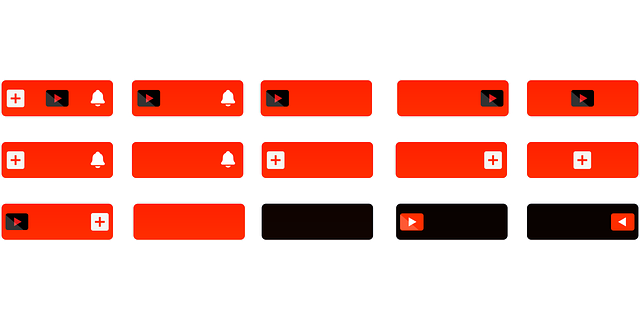Converting DivX to MP4 offers a powerful solution for managing video file sizes while preserving high-quality visuals, ideal for streaming and sharing online. DivX's advanced compression techniques, combined with the versatile MP4 format, ensure smaller file sizes without sacrificing visual clarity, benefiting both creators and consumers in today's digital media landscape.
Experience crystal-clear images even at the lowest bitrates with our guide to achieving exceptional visual quality. We’ll explore the intricate relationship between bitrates and image fidelity, delving into the role of DivX in video compression and why it’s a popular choice. Learn about the benefits of converting DivX to MP4 formats, along with techniques and tools for preserving optimal quality. Discover real-world applications that highlight why this conversion is a top pick.
Understanding Bitrates and Image Quality

Bitrate is a term often used in video and audio compression, referring to the amount of data used to represent each second of media content. It’s a measure of how much information is packed into a file, affecting both file size and quality. When discussing image quality at low bitrates, it becomes crucial to understand that lower bitrates generally result in smaller file sizes but may sacrifice detail and clarity in the visual output. This is where efficient compression formats like DivX come in, offering a way to maintain high-quality images even when working with constrained bandwidth or storage space.
Converting files from DivX to MP4 can be beneficial for various reasons, one of which is its ability to optimize bitrate without significantly impacting perceived image quality. MP4 (MPEG-4 Part 14) is a container format that supports a wide range of video and audio codecs, many of which are designed for efficient data compression. By converting DivX videos to MP4, users can take advantage of these optimized codecs, ensuring the converted file retains exceptional image clarity, even at lower bitrates. This is particularly useful for streaming or storing media content where space and bandwidth constraints must be balanced with acceptable visual quality.
The Role of DivX in Video Compression

DivX has played a pivotal role in video compression technology, offering exceptional image quality even at low bitrates. This format revolutionized digital media by providing a more efficient and smaller file size compared to other codecs, making it easier to share and stream videos online. The DivX codec is known for its ability to compress video data while maintaining sharp visuals, vibrant colors, and smooth motion, which has made it a popular choice for various applications, including online streaming, video sharing platforms, and mobile devices.
Converting DivX to MP4 has become a common requirement due to the widespread adoption of DivX as a compression standard. The MP4 (MPEG-4 Part 14) format is a container that supports multiple codecs, making it versatile for different purposes. When converting DivX to MP4, users can take advantage of modern hardware acceleration and efficient decoding capabilities, ensuring that the original video quality is preserved even after the conversion process. This makes it easier for content creators and consumers alike to enjoy high-quality videos across various devices and platforms.
Benefits of Converting DivX to MP4

Converting from DivX to MP4 format offers a range of advantages, especially for those looking to maintain high-quality video with smaller file sizes. MP4 is a versatile and widely supported container that can efficiently compress video data while preserving its original quality. This makes it ideal for streaming or sharing online without significant loss in picture clarity.
One of the key benefits of converting DivX to MP4 is the ability to achieve better compatibility across various devices and platforms. While DivX was once a popular codec, MP4 has become the industry standard due to its flexibility and advanced compression techniques. Converting your files ensures they can be seamlessly played on modern smartphones, tablets, media players, and online streaming services.
Preserving Quality: Techniques and Tools

In the quest for optimal video compression, preserving image quality becomes an art. Advanced techniques like advanced prediction, vector quantization, and motion compensation play a pivotal role in maintaining detail even at reduced bitrates. These methods analyze and predict pixel values, reducing redundant data while minimizing visual artifacts.
One popular format that leverages these technologies is DivX, known for its efficient conversion to MP4 containers. This process allows users to enjoy high-quality videos in smaller file sizes, ideal for streaming or storage on devices with limited capacity. Advanced encoders and decoders ensure that the original quality is retained, making it a reliable choice for content creators and consumers alike.
Real-world Applications: Why Choose This Conversion?

In today’s digital age, where multimedia content is readily available and consumed across various devices, ensuring optimal image quality while maintaining file size efficiency is a priority for many. This is especially true in scenarios where bandwidth is limited or storage space is constrained. The choice to convert DivX to MP4 offers several compelling real-world applications.
DivX, known for its high compression rates and excellent video quality, can be further optimized by converting it to the MP4 format. MP4, a popular container format, supports a wide range of codecs, allowing for tailored adjustments to meet specific needs. This conversion enables users to enjoy crisp, clear videos with minimal file size increase, making it ideal for streaming over low-speed connections or sharing on social media platforms without sacrificing visual fidelity.
The ability to maintain exceptional image quality at low bitrates makes converting DivX to MP4 a compelling choice for content creators and consumers alike. By leveraging techniques that optimize video compression without sacrificing visual fidelity, this conversion process ensures that media files are not only smaller but also compatible with a wide range of devices and platforms. In today’s digital landscape, where accessibility and efficiency matter most, understanding the benefits of DivX to MP4 conversion can revolutionize how we share and enjoy multimedia content.
